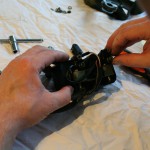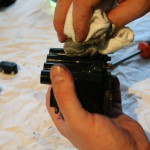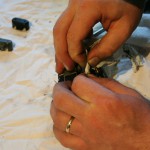…and a legal scholar, apparently. Fallout from the Patreon hack:
From: Matthew Hopkins <matthopkins@thewitchfindergeneral.com>
Subject: URGENT Media Inquiry – Randi Harper Patreon
To: des@des.no
Date: Tue, 13 Oct 2015 00:33:26 +0100
Dear Dag-Erling Smørgrav ,
I am the author of the major blog www.matthewhopkinsnews.com. I am sending you this email because your name appears in a list of people who donate to a Patreon operated by a person called Randi Harper. The list was confidential but has been hacked and placed online by unknown third parties. As a result of the leak you may be named, so please read this email carefully.
Ms Harper is a controversial figure due to her extreme political views, including support for Sarah Nyberg, a political activist who at one time claimed to be a paedophile and supported white supremacism, although now claims they were ‘joking’. Harper has also admitted to drug abuse, including attempting to smoke meth from a broken lightbulb. She also irresponsibly dyed her dog blue and accidentally allowed it to lick up her drugs. The following Breitbart articles may be of assistance –
http://www.breitbart.com/big-journalism/2015/07/21/feminist-champion-randi-harper-in-her-own-words-stop-making-everything-a-gender-issue/
http://www.breitbart.com/big-journalism/2015/09/12/meet-the-progressives-defending-gamergate-critic-sarah-nyberg/
http://www.breitbart.com/big-journalism/2015/09/11/leading-gamergate-critic-sarah-nyberg-claimed-to-be-a-pedophile-apologised-for-white-nationalism/
You are supporting a person who is associated with some of the vilest imaginable extremism. Your exposure is interesting, partly because a similar leak occurred a few years ago here in Britain, when the membership list of one of Britain’s far right parties was leaked online – http://www.theguardian.com/politics/2009/oct/20/bnp-membership-list-wikileaks
As a responsible journalist, I can assure you I shall not be publishing the list. However, some of you may work in regulated roles with responsible access to information, vulnerable adults or children. There may be a lawful public interest in my contacting the relevant authorities (including an employer). In addition, the third parties who obtained the data have, as I said, released it online and I suspect it will find its way to Wikileaks, amongst other places.
I would like to invite you to answer the following questions –
- Did you know about Randi Harper’s history?
- Do you endorse her extremist views?
- In light of the revelations about her, and her support for Sarah Nyberg, will you continue to donate?
- Are you aggrieved at Ms Harper’s failure to safeguard your personal data?
Please provide comment as soon as possible.
About Me
I am the author of www.matthewhopkinsnews.com, a Conservative leaning blog that has had over 188,000 unique visits since January this year. My pen name is Matthew Hopkins and my real name is Sam Smith. My blog has sourced stories for some of Britain’s largest newspapers.
I am studying a Master’s Degree in law combined with an LPC (attorney’s certificate). In fact I was praised in the British Parliament by then Liberal Democrat MP John Hemming for my legal skills representing a vulnerable woman in the High Court, who faced being declared mentally incompetent – http://www.publications.parliament.uk/pa/cm201314/cmhansrd/cm140113/petntext/140113p0001.htm.
Kind regards,
Sam Smith
writing as
Matthew Hopkins
The Witchfinder General
www.matthewhopkinsnews.com
http://www.thewitchfindergeneral.com
@MHWitchfinder
He clearly expects me to be intimidated. Should I be flattered?
Highlights:
- Citing Milo Yiannopoulos of Breitbart, a far-right blogger whose idea of investigative journalism includes such gems as “there is no evidence that Randi Harper is actually a crack whore” (paraphrased);
- “Nice job you have there, it would be a shame if my journalistic and personal ethics compelled me to tell your employer that you support paedophiles” (but don’t worry, it’s totally not blackmail);
- Complex question fallacy (“have you stopped beating your wife?”);
- Patreon was hacked, the British National Party was also hacked, therefore supporting Randi Harper on Patreon is equivalent to supporting the British National Party;
- Randi Harper is responsible for the security of Patreon’s network and therefore for the theft of Patreon’s user database.
His mother must be really proud.
You know what, Sam-Smith-writing-as-Matthew-Hopkins? I just doubled my pledge to Randi Harper, pledged similar amounts to Zoë Quinn and Brianna Wu, and signed up for a monthly donation to Feminist Frequency. Unfortunately, I couldn’t find a way to donate to Sarah Nyberg.
How about them apples?
EDIT: various markup and spelling fixes

















